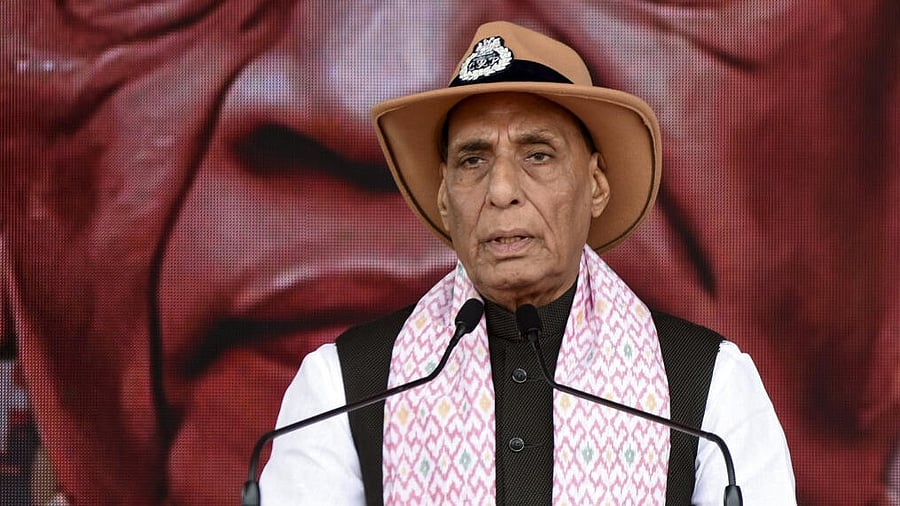
Defence Minister Rajnath Singh.
Credit: PTI Photo
New Delhi With the Indian Army embracing Artificial Intelligence, Defence Minister Rajnath Singh on Tuesday asked innovators to concentrate on cutting-edge technologies as tomorrow’s wars will be fought not only with weapons but also with “algorithms and autonomous systems.”
“Battlefield has changed. Wars of tomorrow will be fought with algorithms, autonomous systems and AI. Drones, anti-drone systems, quantum computing and directed-energy weapons will define the future. We have seen such a demonstration during Operation Sindoor,” Rajnath said here at an event attended by start-up firms backed by the Defence Ministry.
Later addressing a national conference on defence manufacturing, he said, “Modern warfare is not only based on weapons, but exploits the influence of frontier technologies like AI, machine learning, robotics, quantum computing, cyber and space technology.”
The minister’s comments come a day after a top army official explained how 94% accuracy was achieved to pinpoint the location of the enemy guns or missile units during the India-Pakistan conflict in May by creating a battlefield model with archived Pakistani troop movement data and electronic chatter collected and collated over two decades.
“We built the battlefield model from 26 years of archived radio emissions and frequency signatures. The archive not only captured the spectral fingerprints of transmissions but also mapped past movements of individual platforms and their assigned units across Pakistan,” said Lt Gen Rajiv Sahni, Director General, Corps of Electronics and Mechanical Engineers.
All enemy data feeds coming from ground sensors, radar, satellites and drones were collated on a single screen for the commander to make quick decisions. This included data on troop position, movement and weapon deployment.
As many as 23 applications were put together to provide a full battlefield picture and post-strike assessment, said Lt Gen Sahni, who was Director General, Information Systems during the hostilities.
A home-grown application for electronic intelligence collation used by all intelligence agencies, was tweaked in record time during Operation Sindoor to meet the customised requirements of the military and other agencies to help locate adversary sensors.
For precise targeting with long-range artillery guns, an AI enabled meteorological reporting system that uses IMD data to predict the wind speed and other weather parameters up to a distance of 200 km 48 hours in advance was used.
A common surveillance picture and target acquisition system, known as Trinetra, was integrated with Project Sanjay – an all encompassing battlefield surveillance system rolled out for the northern and western fronts - to generate a common operational and intelligence picture at both tactical and operational levels.
This, according to the officials, enhanced coordination of resources, improved decision-making, and provided commanders at all levels with higher mental agility and situational awareness.
In the last two years, the Indian Army not only created more than 70 digital applications, but it also became a part of every national technology mission. The force has also opened an AI research and incubation centre in Bengaluru.
